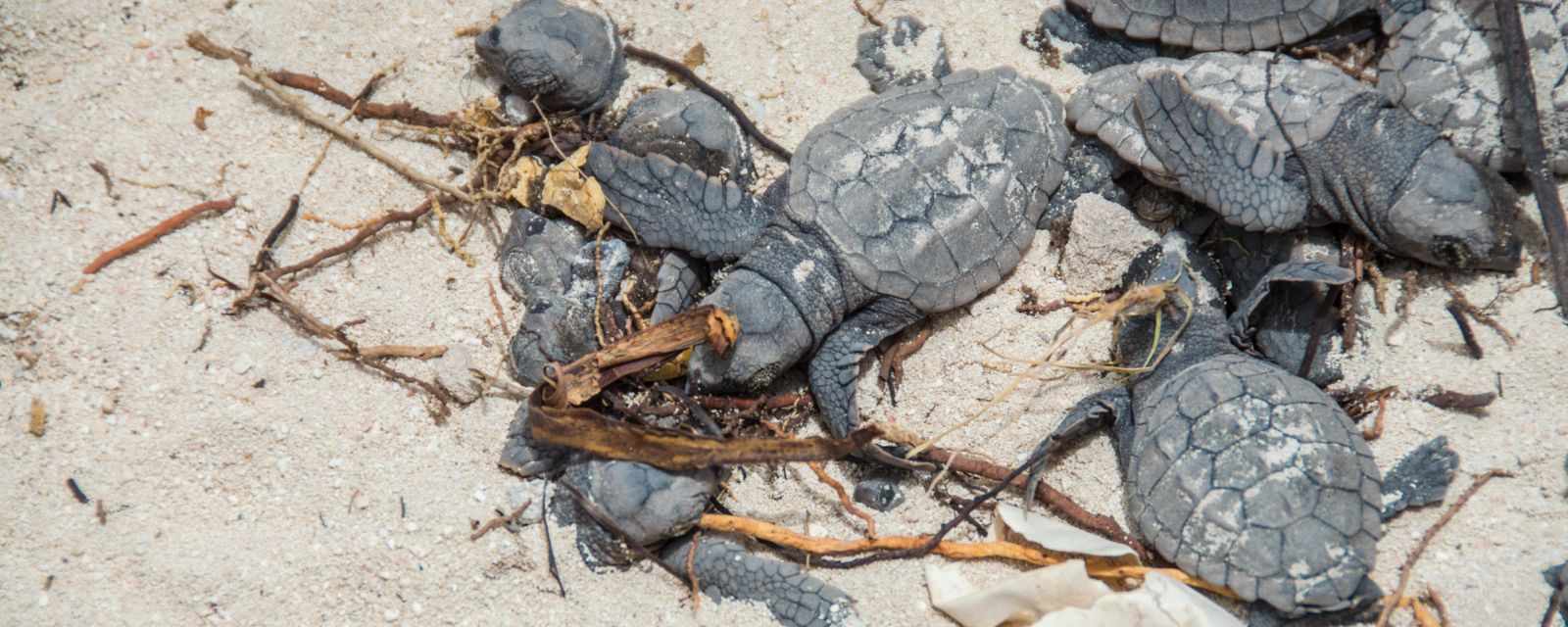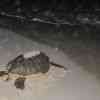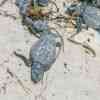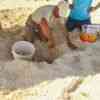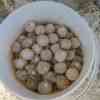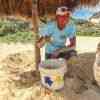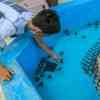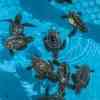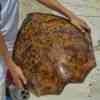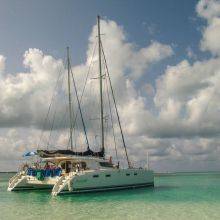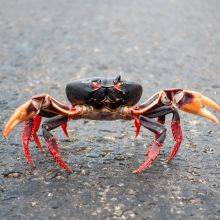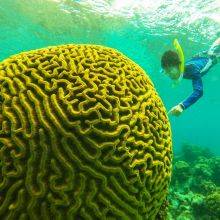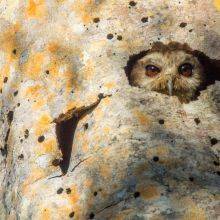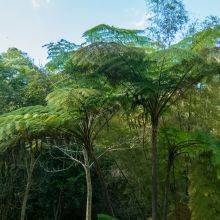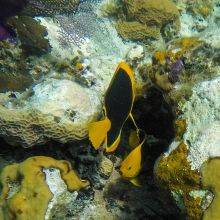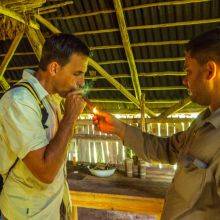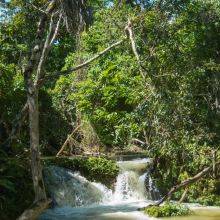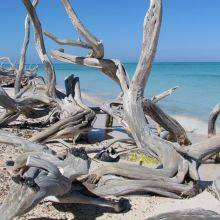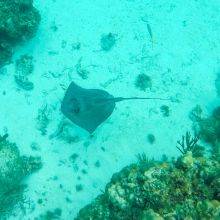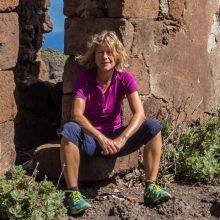When Is the Best Time
Cayo Largo is a great island to watch turtles at night. Also, the education centre and breeding station are worth a visit to get an idea of these fascinating cold-blooded animals classified as reptiles. Green sea turtles come at night to lay their eggs between May to September in the rainy season on Cayo Largo in Cuba. They lay their eggs on the same beach where they were born.
They dig just with their flippers and cover the ping-pong seized eggs with the sand afterwards. The temperature determines the sex of the hatchlings; hotter sand above 83°F/29°C produces females and below males. The hatchlings emerge roughly after 60 days.
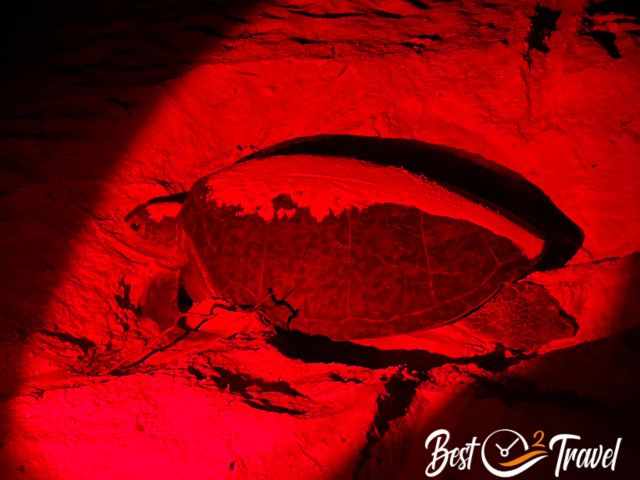
The best time to spot turtles laying their eggs is within two hours before and after high tide. Why? The turtles are swimmers, not made for hauling up the sand. They prefer high tide to minimize the way and effort. Digging the hole with the flippers is already challenging. They are vulnerable on land, which is the reason they try to finish as fast as possible.
It lasts from May to October in Cuba, although showers occur more often at night or in the morning. There is a possibility of hurricanes from August to October. The reason we gave June a try and we had almost always wonderful weather during the day, just some brief showers.
Best Months to Visit
Location and Tips

One morning we saw a guy digging for eggs. We figured out he was an enthusiastic environmentalist, and he told us about his efforts for the sea turtles. We assisted him in digging for the eggs.
He protects them until they hatch. We were very impressed by how much effort it is to take care of eggs and turtles. He is doing such important work that we gave him a donation.
But better bring some food for the turtles. This is really appreciated, and difficult to get in Cuba.
Afterwards, they are brought to the beach, where their mother laid the eggs before. The baby turtles crawl into an uncertain future in the sea.
In the beginning, we were a bit unlucky when we came to observe turtles at night. The light of late arrival planes often disturbs the green turtles, which also happened this night. Cayo Largo is small, and tourism is the main income. However, the arrival of planes should be prohibited at night.
However, the turtle returned in this night two hours later and successfully laid the eggs. Usually, you can watch the turtles while laying the eggs easily. It is such a big effort for them that they are almost hypnotized during this process.
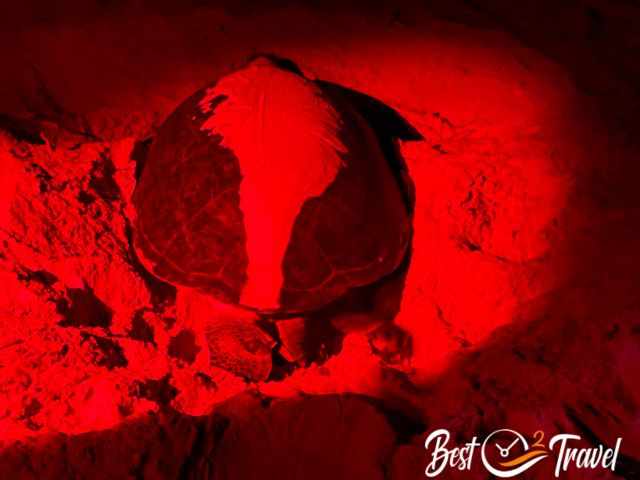
Please, remember the turtle-watching rules; no torch, no flashlight, and never stand in front of a turtle; best do it with a professional guide. Repellent for mosquitos is essential in Cayo Largo. Our poor nephew got more than 30 bites through his trouser.
- They are endangered and the second largest after the leatherback turtle.
- Weighing up to 225 kg/496 lbs and reaching 1.2 m/ almost 4 feet in length.
- The name comes from the colour of their fat, not their shell.
- It's the only species that come onshore for basking.
- We watched this once at the Ningaloo Reef and Laniakea, Hawaii.
- This species can be found worldwide and nest in over 80 countries.
- Their preferred diet is seagrass. It is believed that they enhance the growth of seagrass beds.
- The biggest threats to them are humans, with leaving plastic and hooks in the sea. Another threat is the disease called fibropapilloma. It's a fast-growing tumour on the face.
